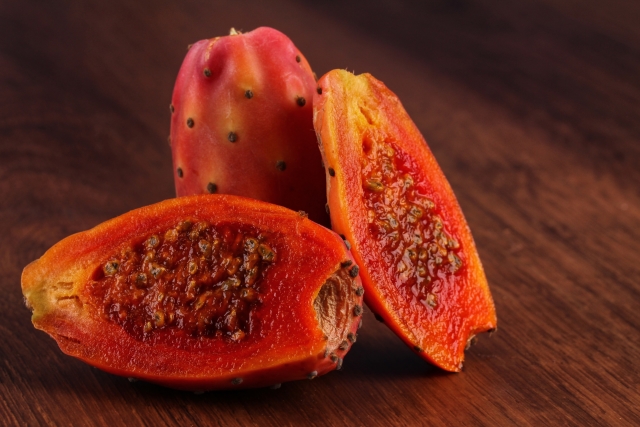
What’s the point of adding a multitude of products — often with incomprehensible lists of ingredients, some of which can even be harmful to our health — when we can take advantage of what nature has to offer for specific skincare needs?
Eye contours, anti-wrinkle plumping creams and serums. What if we got rid of our thousand and one anti-aging products in favor of the Barbary fig or prickly pear, whose rejuvenating virtues are finding a growing number of fans?
Why prickly pear?
With the prickly pear, you can transform your bathroom into a spa for a moment of pampering. This fruit, present in Mexico and North Africa, has many nutritional and cosmetic benefits.
While rubbing the fruit on one’s face is not advisable, it is possible to make use of its oil. This oil is not directly extracted from the fruit but from the seeds it contains, which are cold-pressed to preserve its maximum benefits.
What are the benefits?
Prickly pear seed oil is rich in vitamin E, polyunsaturated fatty acids and sterols, and is mainly used in cosmetics for its anti-aging and anti-wrinkle properties. It not only helps with tonicity, but also helps fight against premature aging of the skin, which makes it ideal to use after sun exposure. In other words, it can replace many of the beauty essentials in your bathroom.
An added advantage?
Like many vegetable oils, prickly pear seed oil is not just a one-trick pony. It can be used after exposure to the sun, but also has healing, moisturizing and regenerative properties which can be applied to facial skin as well as to hair. The prickly pear is a real Swiss army knife of skincare and an indispensable ally for dry and mature skin.
How to use it?
It’s best to buy it in the purest version possible (which can be expensive) and in a strong concentration, in order to get the most out of its benefits without having to spread thick layers of it on your face.
With pure versions, a few drops are more than enough, preferably in the evening, and massaged on the face, neck and décolletage in circular fashion as you would a classic treatment.
How much does it cost?
The cost is largely dependent on the purity of the oil. It can range from about 10 euros (or approx. P580) per 10 milliliters for a slightly concentrated oil to about 100 euros (or approx. P5,800) per 50 ml for a pure oil, with a wide range in between.
It’s a significant investment in the short term, but becomes economic over time because of the small quantity necessary to take advantage of its benefits.
Where to find it?
Almost all brands and platforms dedicated to vegetable oils sell prickly pear seed oil. You may need to shop around to find the formula, concentration and price that suits you best.
Another option is to opt for products containing prickly pear seed oil; many cosmetic brands have formulas that already use it. If you follow this path, however, there may be the risk of applying more products than needed by the body. CC
RELATED STORIES:


